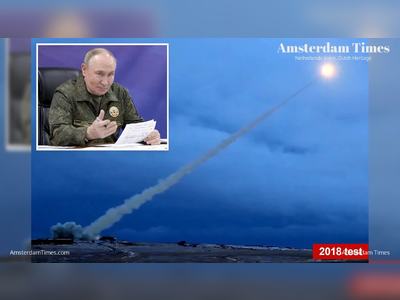The Silent Graves of Syria: Unearthing a Grim Legacy of the Assad Regime
New revelations of mass graves challenge the global community to confront atrocities reminiscent of a darker era in human history.
Recent revelations regarding the existence of mass graves in Syria have forcefully reminded the global community of the brutal realities that linger in conflict zones.
These sites, where reportedly over one hundred thousand bodies lie buried, have been brought to international attention through the testimonies of witnesses and the relentless efforts of organizations like the White Helmets.
The magnitude of this discovery draws a haunting parallel to the atrocities committed during the Nazi era, illustrating the systematic disappearance, torture, and murder perpetuated under the Assad regime.
Yet, the world's response to such revelations often seems muted, perceiving them as an unsettling but inevitable part of ongoing conflicts.
This numbing desensitization on a global scale prevents a necessary shift toward recognizing the potential legal and political ramifications of discovering these mass graves.
A potential turning point for international justice, this discovery might serve as a critical step toward addressing the legacy of Syria's turmoil.
However, historical precedents in regions like Bosnia and Rwanda remind us that international justice processes often grind slowly.
The challenge lies in how to quantify justice for an entire people, a task that undoubtedly necessitates comprehensive global cooperation.
Former Ambassador Stephen Rapp and other dedicated figures are rigorously working with various organizations to document these harrowing events.
The documentation process, though overwhelming, is vital for both legal proceedings and historical accountability.
Nevertheless, it is crucial to acknowledge the immense emotional and psychological burden these efforts place on the families of the disappeared.
For them, closure might be elusive, but it necessarily involves confronting the brutal loss of their loved ones.
Ever since the collapse of the regime, many families have been engaged in a relentless search for their missing relatives, traversing from prison gates to potential mass grave sites.
The endeavor is both physically and emotionally monumental.
While logistical efforts to manage these sites are important, the human dimension must remain at the forefront.
As we reflect on these critical challenges, the international community faces a pressing question: can these sites be preserved for future investigations in a manner that balances humanitarian needs with the imperative for justice?
The urgency to transform these discoveries into a global rallying point for recognition and accountability cannot be overstated.
The alternative—letting this chapter pass unaddressed—threatens to make it yet another grim episode in the annals of history.
It is a pressing challenge for international stakeholders, and one that demands immediate and dedicated action.
These sites, where reportedly over one hundred thousand bodies lie buried, have been brought to international attention through the testimonies of witnesses and the relentless efforts of organizations like the White Helmets.
The magnitude of this discovery draws a haunting parallel to the atrocities committed during the Nazi era, illustrating the systematic disappearance, torture, and murder perpetuated under the Assad regime.
Yet, the world's response to such revelations often seems muted, perceiving them as an unsettling but inevitable part of ongoing conflicts.
This numbing desensitization on a global scale prevents a necessary shift toward recognizing the potential legal and political ramifications of discovering these mass graves.
A potential turning point for international justice, this discovery might serve as a critical step toward addressing the legacy of Syria's turmoil.
However, historical precedents in regions like Bosnia and Rwanda remind us that international justice processes often grind slowly.
The challenge lies in how to quantify justice for an entire people, a task that undoubtedly necessitates comprehensive global cooperation.
Former Ambassador Stephen Rapp and other dedicated figures are rigorously working with various organizations to document these harrowing events.
The documentation process, though overwhelming, is vital for both legal proceedings and historical accountability.
Nevertheless, it is crucial to acknowledge the immense emotional and psychological burden these efforts place on the families of the disappeared.
For them, closure might be elusive, but it necessarily involves confronting the brutal loss of their loved ones.
Ever since the collapse of the regime, many families have been engaged in a relentless search for their missing relatives, traversing from prison gates to potential mass grave sites.
The endeavor is both physically and emotionally monumental.
While logistical efforts to manage these sites are important, the human dimension must remain at the forefront.
As we reflect on these critical challenges, the international community faces a pressing question: can these sites be preserved for future investigations in a manner that balances humanitarian needs with the imperative for justice?
The urgency to transform these discoveries into a global rallying point for recognition and accountability cannot be overstated.
The alternative—letting this chapter pass unaddressed—threatens to make it yet another grim episode in the annals of history.
It is a pressing challenge for international stakeholders, and one that demands immediate and dedicated action.











